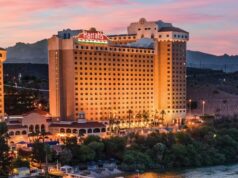
NATIONAL REPORT—Let’s assume you just opened your hotel. According to the American Council for an Energy-Efficient Economy, within two years your mechanical systems will be 25 percent less energy efficient. “Over time, energy performance always dips,” says JJ Steeley, Executive Vice President of Customer Experience for Carbon Lighthouse. That dip may be because of deferred maintenance, an operational change to the building, or maybe the building management system needs to be reprogrammed. The good news, according to Steeley, is that those energy inefficiencies can be pinpointed using sensors and then addressed by experts. Getting the mechanical systems in a building to work together efficiently is akin to conducting an orchestra, Steeley says.
The Claremont Club & Spa, A Fairmont Hotel recently turned to Carbon Lighthouse to optimize its mechanical systems and turn energy waste into guaranteed financial returns with zero upfront cost. The Claremont stands to achieve more than $300,000 in energy cost savings. Carbon Lighthouse will employ its turnkey approach that includes data collection, implementation, and performance management, while its Efficiency-as-a-Service model—which includes no upfront costs or capital expense—guarantees energy savings.
Carbon Lighthouse will deploy dozens of sensors throughout the Claremont facilities to collect thousands of original thermodynamic data points—from air and water temperature and flow rates in HVAC (heating, ventilation, and air conditioning equipment), to lighting and occupancy. Supplementing this with utility, weather and other available data, Carbon Lighthouse will use its patented CLUES platform to model thousands of energy scenarios and optimize existing equipment and arrive at the most financially beneficial and eco-friendly solution for the building.
“We create a ground-up model of how the building interacts,” Steeley says. “We will measure, model and design the energy solution and then project manage the solution. We will work with the subcontractors they already have and then remeasure. We will use whatever technology makes sense.”
Asset Value Increases
In addition to reducing costs and carbon emissions, the work with Carbon Lighthouse is expected to help increase the overall value of Claremont Club & Spa by improving the asset’s net operating income. Carbon Lighthouse guarantees the real dollar value of its estimated energy savings by continuing to stay engaged with the property and its on-site teams and ensure the energy efficiency measures persist in the long term. This translates into sustained building financial value and increased guest comfort.
For Carbon Lighthouse, seeking potential energy savings in a building is like mining for a valuable commodity. Steeley describes the potential energy savings as “the energy reserve” and uses the word “extraction” to describe the efficiency that can be gained.
“Depending on the size of the building, you can have hundreds of sensors,” Steeley says. A hundred thousand dollars in energy savings a year could add up to $1.5 million to an asset’s value, she adds.
Steeley says her company is focused on finding energy savings with minimal capex. “It is up to the client to pay upfront or amortize it. You can do it with no upfront cost. Typically, they want to pay upfront and go for a higher return.”
Solar Panel Optimization
For those hotels considering solar, Carbon Lighthouse’s goal is to shepherd through a project with the fewest number of solar panels. “Most solar companies are incentivized to sell as many solar panels as possible,” Steeley says. “We can get a site to net zero with fewer panels. Battery storage systems, which have come down in price, can make a solar project even more feasible.
Steeley says making a building as energy efficient as possible can be a competitive advantage, with all the conversation today about responsible investing. Meeting planners and others are favoring green lodging establishments.
Environmentally, a building becoming more efficient is critical. Carbon Lighthouse says the commercial real estate sector is responsible for 40 percent of the Earth’s carbon emissions.
Glenn Hasek can be reached at greenlodgingnews@gmail.com.






